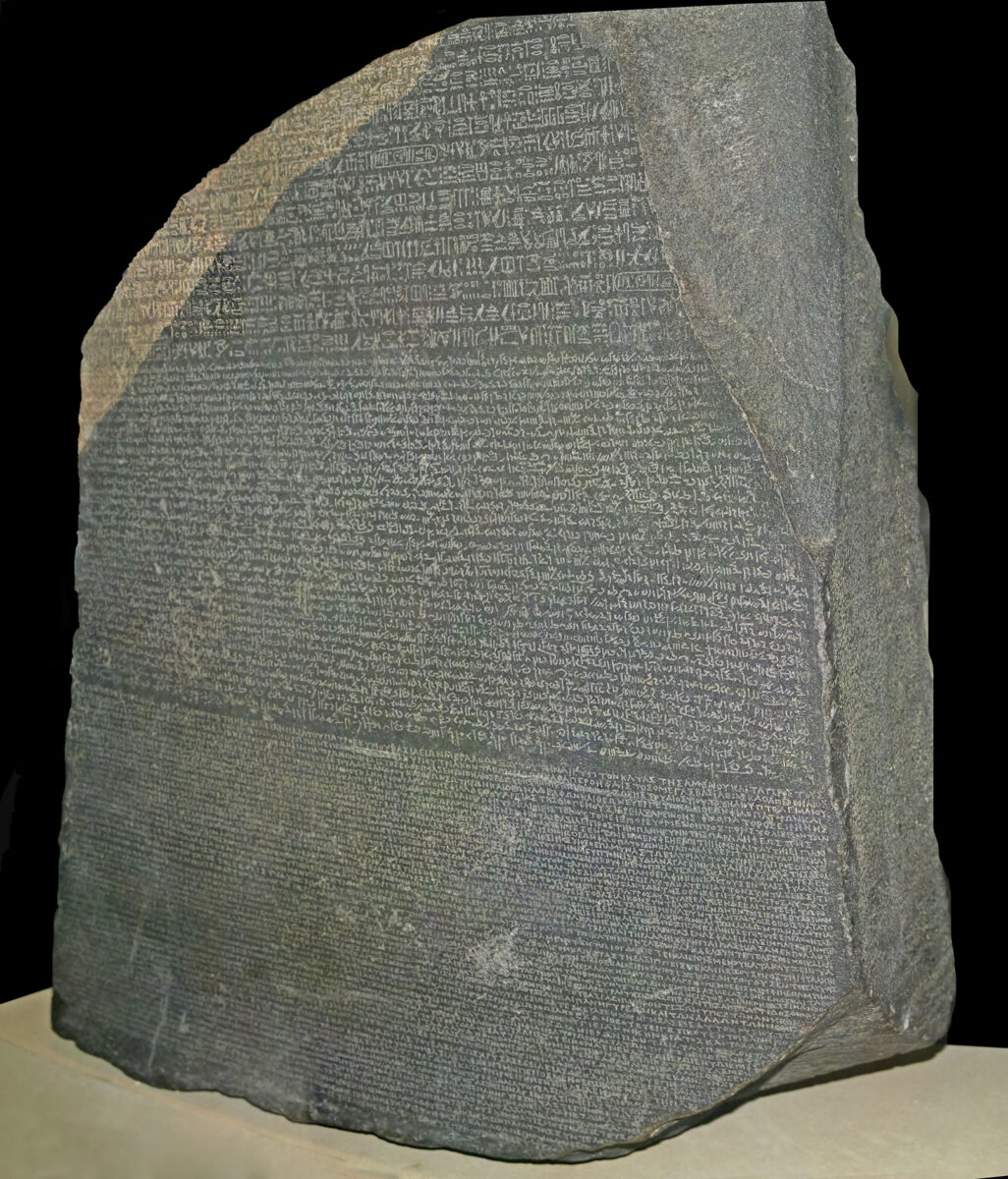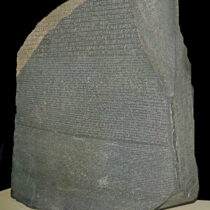On the occasion of the opening of the exhibition “Hieroglyphs: Unlocking Ancient Egypt” at the British Museum in London, one of the most iconic archaeological finds, the Rosetta Stone, was moved for the first time since it was installed in the museum’s Egyptian Sculpture Gallery.
It is a slab of granodiorite weighing 760 kg that was accidentally unearthed in 1799 by French soldiers, led by Pierre-François Bouchard, during Napoleon’s Egyptian campaign. It bears an inscribed text in two languages (Egyptian and Greek) and three writing systems. The British took the precious find to London after the defeat of the French in Egypt in 1801. It became the key to decoding the hieroglyphs.
Exhibition curator Ilona Regulski told the Evening Standard newspaper: “We couldn’t tell the story of the decipherment of the hieroglyphs in the bicentenary celebration without the Rosetta Stone, so we decided it should have pride of place in the exhibition”.
According to the Tatler however, the Universities of Manchester and Oxford are calling for the repatriation of the great archaeological find.
The exhibition opens on October 13 and will run until February 19, 2023 displaying more than 240 objects of incomparable value.





